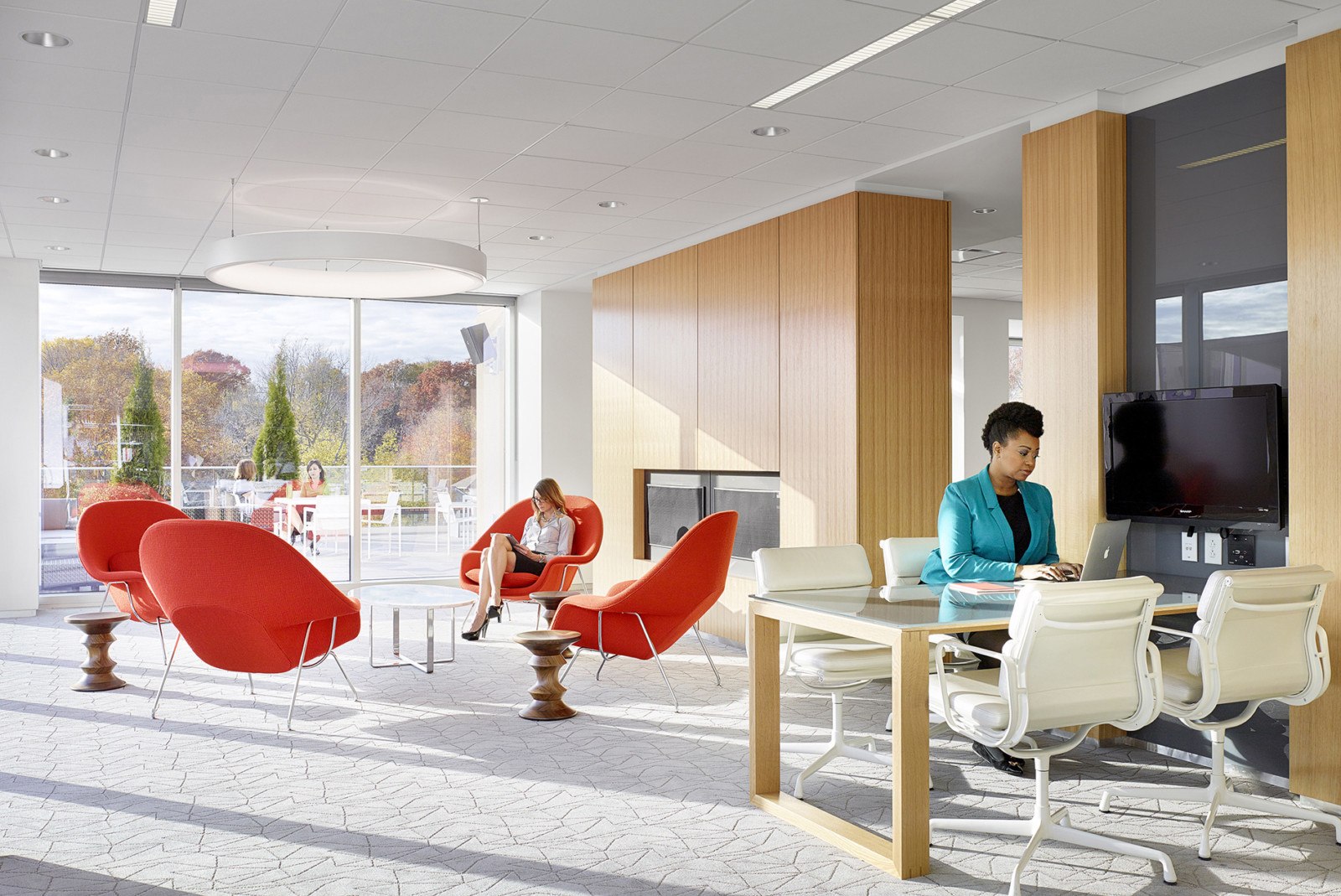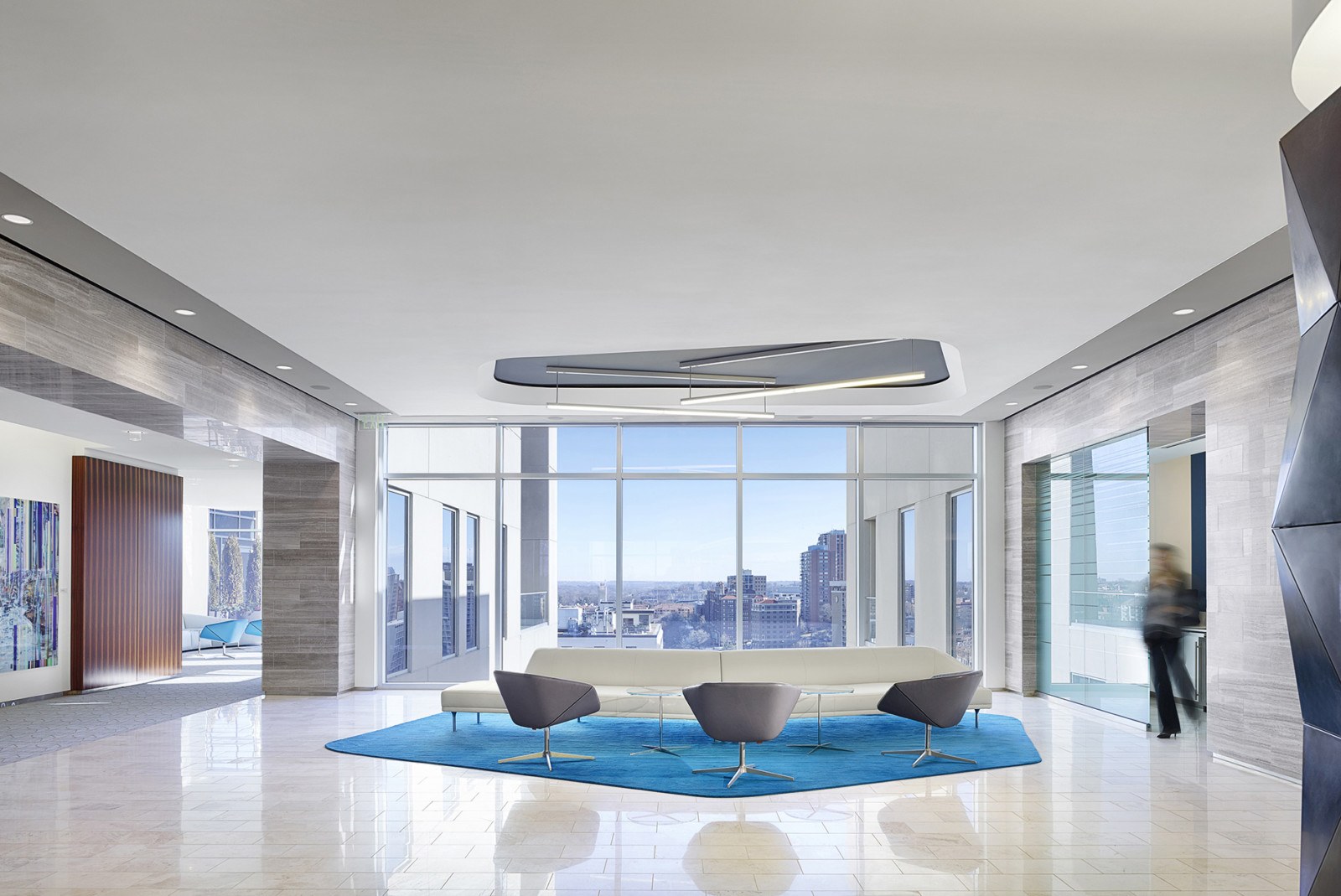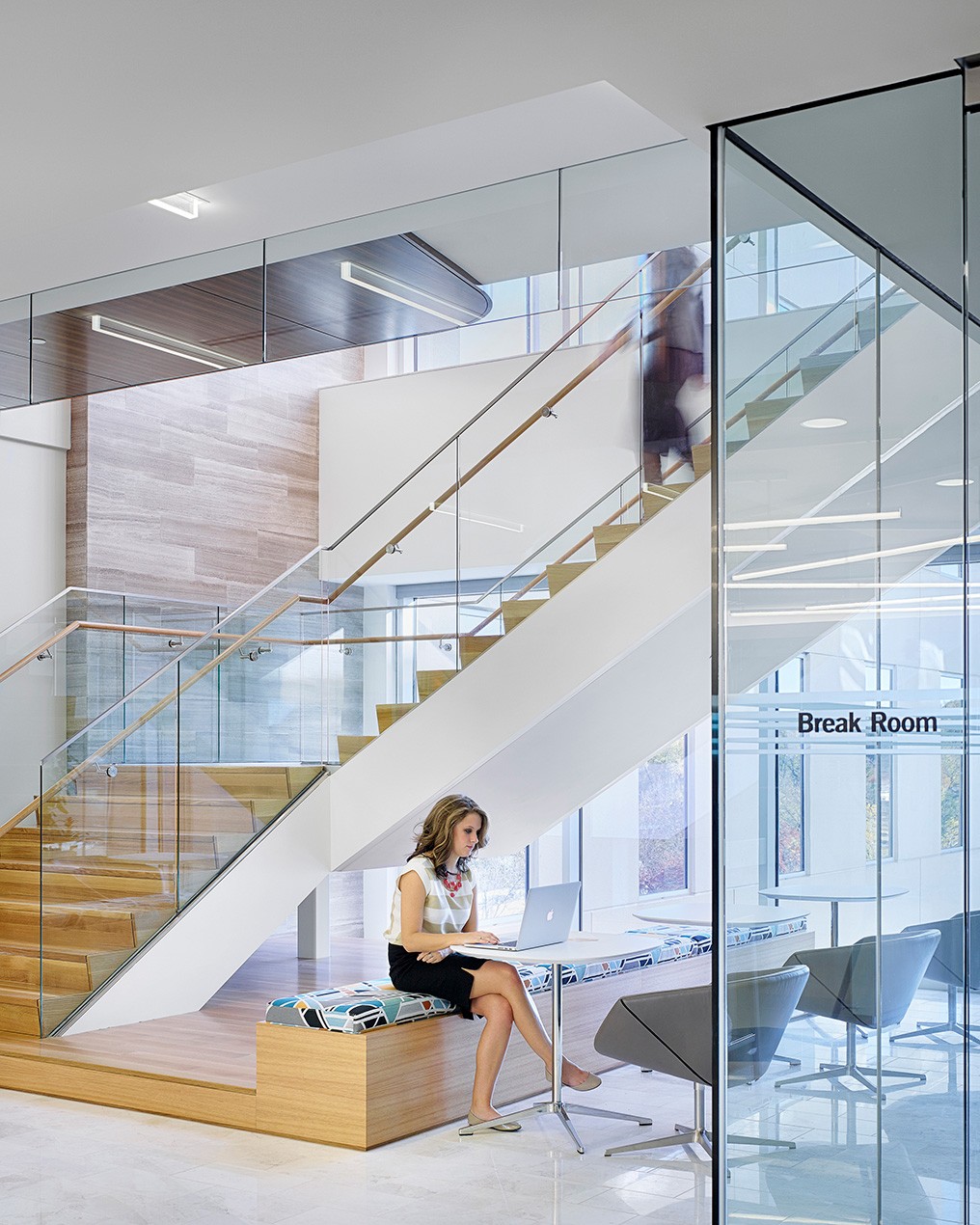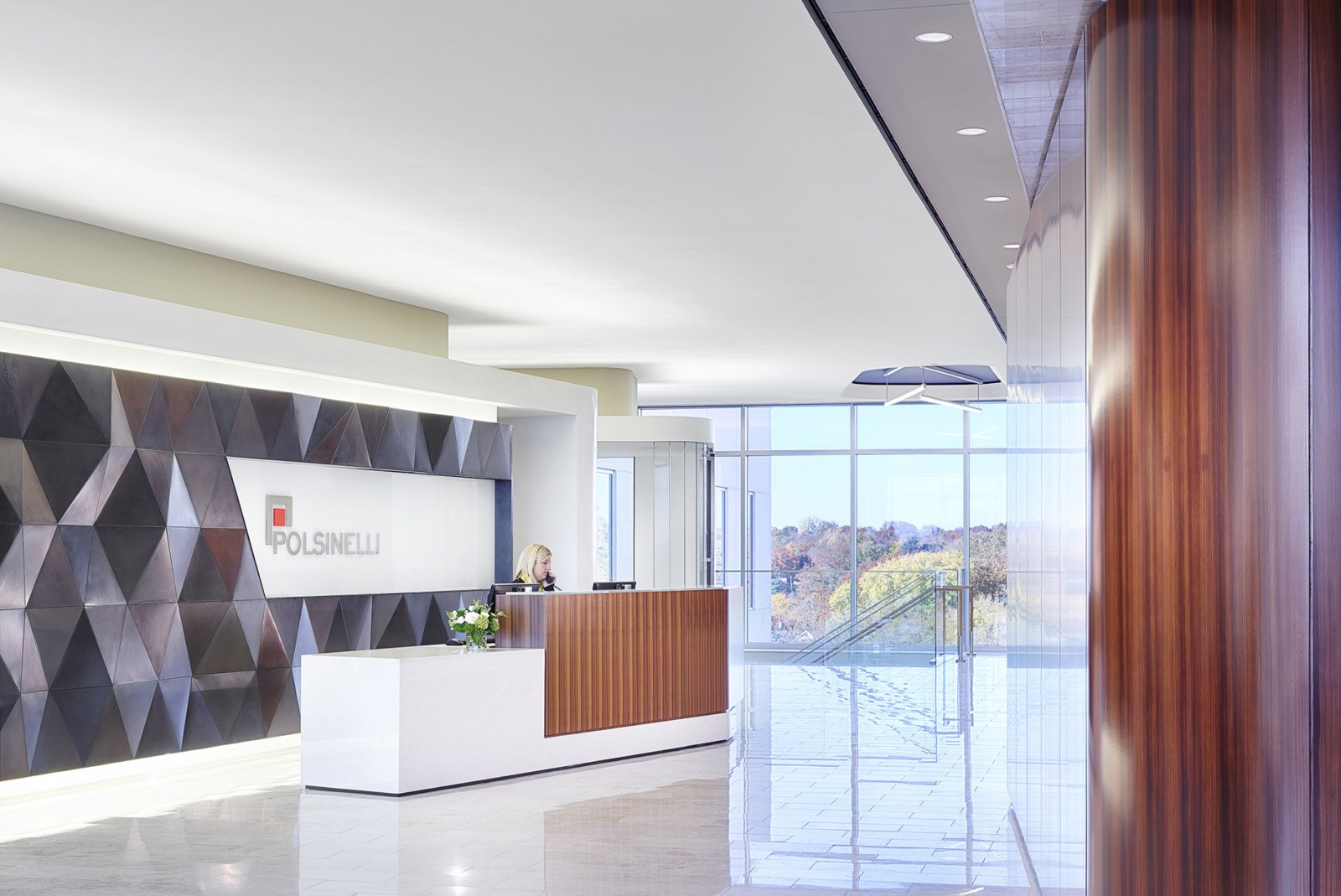Polsinelli, one of the country’s fastest-growing law firms, has partnered with HOK on more than 13 projects in 11 cities over the last five years.
From New York to Denver, these projects have played an integral role in establishing Polsinelli’s workplace design standards and creating a consistent brand experience across its offices.
HOK’s Peter Sloan, director of design, interiors, and Eric Linebarger, a project designer, talked to MetroWire Media about the two firms’ relationship and the impact on corporate workplace design.
Excerpted from MetroWire Media:
Since its 2009 merger with Shughart Thomson & Kilroy, Polsinelli has continued to grow in terms of revenue and headcount. … In support of this growth, the firm pursued a significant rebranding and strategic marketing effort in 2013, which came at a time when the industry was going through a dramatic post-recession transformation.
“It was a complete rebrand in terms of our brand strategy: the design, the creative execution, and the underlying value proposition we developed and started to convey to the workplace,” says Allison Berey, chief marketing officer at Polsinelli. “If you look back at the historical architecture of our buildings and brand, it really was a different level of sophistication than where we are now. It was far more traditional. Now we’ve really moved in this direction of a more contemporary brand design and architecture. HOK is ensuring that their vision for our space nicely aligns with the brand we are building nationally.”
Evolving the Law Office
Since [debuting Polsinelli’s Plaza Vista project in November 2013], the team has opened offices in New York, Dallas, Washington D.C., and others, with a handful of projects currently underway.
But while certain brand considerations are important, Linebarger says the team has to be careful not to be prescriptive for each office, but rather to allow each office to showcase its distinctive culture while still maintaining a consistency from place to place to keep operating costs to an efficient level. After all, being an efficient operation is a crux of Polsinelli’s value proposition.
Linebarger says he’s seen a true evolution in the area of client-facing hospitality. In previous years, the premium spaces like hospitality lounges were reserved for high-level associates. Now, it’s an inclusive client feature.
Millennial Influence
As each new office is created, younger associates have been brought to the table to take part in the design dialog. The result is an increased desire to host events and engage with the community, a highlighted importance of diversity and a genuine desire to be better connected. Health and wellness initiatives have arisen as well, whether it is wellness rooms, sit-to-stand desks, or better connecting people and spaces through an impressive stairway like the seven-story winding staircase at Plaza Vista. In Denver, dedicated bike storage allows employees in that office to build upon the culture of what wellness looks like in each community, Linebarger says. Mike Polk, Polsinelli director of facilities, says when he is looking for a new location, he gives bonus points for spaces with outdoor venues like balconies and rooftop decks.
“It has attracted younger generations with the idea that the firm is clear about the Polsinelli way, that this is our value proposition to our clients, and this is the story we tell,” Sloan said.
Challenges and Opportunities
… As each successive office opens its doors, the HOK team finds itself repeatedly moving the bar upward. Sloan says there’s definitely an awareness in each office of what other teams have across the country.
“There’s a level of pride built from place to place that’s tailored to each community,” he says. “It’s really building a larger community and a culture.”
It’s a culture of equality, Linebarger says, but meeting different design expectations that across different markets is challenging and depends increasingly on the ability of the contractor and the bidding climate in each city.
“As locations grow, people will notice certain things in certain locations that set standards moving forward,” he says. “Then they say, ‘We need that too.’ It creates this common language, a spatial culture and brand that’s been developed across the country.”



